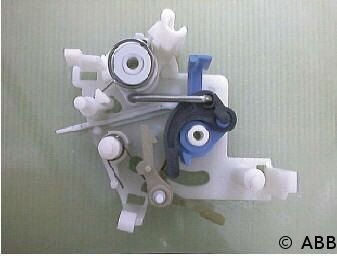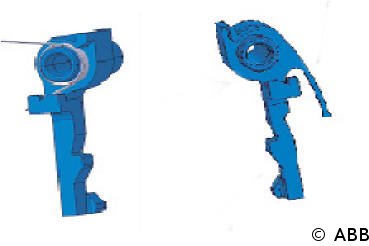

ABB (IT)
RCD Tripping Mechanism
The objective of this test case is to replace 2-3
pieces of an existing RCD device mechanism with a single flexible part.
The compliant mechanism must, of course, replicate the same nominal
static and dynamic behaviour of the corresponding rigid system. As
regards this RCD benchmark, three different operations must be
accomplished by the mechanism:
- arming
- tripping and automatic re-arming with free lever
- tripping with locked lever
Tripping operations are started by an external force coming from a
relay. This force is very low compared to the other forces acting inside
the mechanism.
The time needed to perform tripping operations is also an issue that
must be precisely replicated.

Shunt Trip Device Lever
A Shunt Trip Device is an electrical
apparatus used to activate a circuit breaker if the voltage level drops
under a stated value. The actual mechanism used within the device
contains a locking lever able to rotate around a fixed pin and having a
preloaded rotational spring acting on it. In the long lasting
equilibrium position, the lever is kept in a fixed position by the
preloaded spring and a rotational locking. During the mechanism
operation, the lever is rotated by an external torque and the torsional
load on the spring increases. When the external force disappears, the
spring pushes back the lever into the original equilibrium position. The
proposed compliant solution basically replaces the spring by adding a
flexible appendix to the lever (see next figures).
The design of the solution starts from two different loaded conditions,
both of them having a deformed configuration and a predefined torsional
load. The unknown in this case is the undeformed solution that in
principle can be found using an inverse deformation approach.

Website maintained by the University of Cambridge
Last modified, May 2006